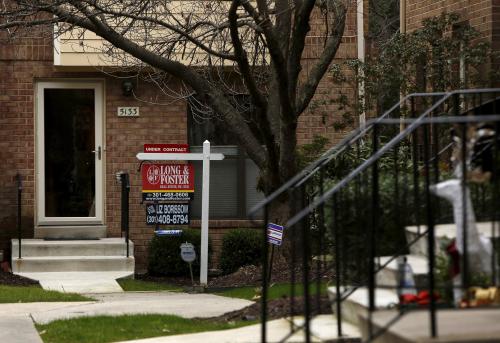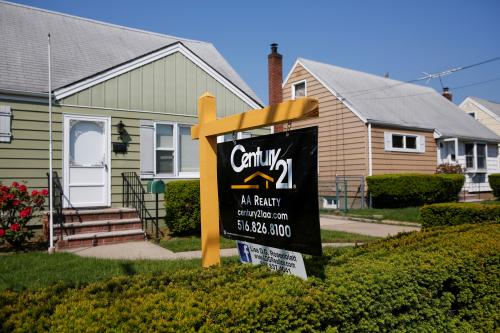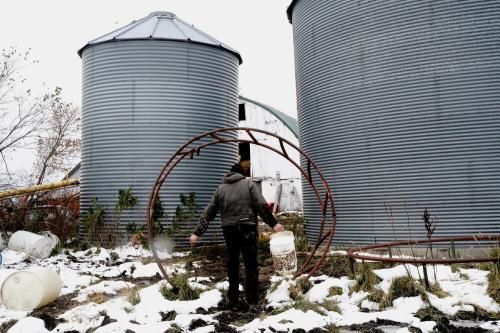The Fourth National Climate Assessment, released in November 2018, pulls no punches. United States communities are already experiencing tangible harms from climate change, and without substantial changes in human behavior, the situation will get worse. Environmental legislation may get more attention in the current Congress: Rep. Alexandria Ocasio-Cortez (D-N.Y.) and other prominent progressives have called for a Green New Deal (GND). Early outlines for such a plan include a broad package of policies, such as transitioning to all renewable energy sources, restoring forests and wetlands, and upgrading infrastructure to be more resilient. However, the current plan does not address a major underlying cause of environmental harm—decades of poor urban land use decisions. Specifically, better urban land use would reduce greenhouse gas emissions (GHGs) from cars and limit the human and financial costs caused by developing environmentally risky land.
In developing an effective plan to address our climate challenges, proponents of the Green New Deal should consider the following tenets to improve urban land use.
Better align the location of jobs, housing, and services to reduce driving
Cars are one of the largest sources of GHGs in the U.S. Switching to electric and hybrid cars will help reduce GHGs somewhat. Even better, get people to drive less or—in transportation planner jargon—reduce vehicle miles traveled (VMTs). In practice, reductions in VMTs could come from several behavioral changes. For instance, people can switch transportation modes, from driving (alone) to walking, biking, using public transportation, or carpooling. Combining multiple tasks—like picking up groceries on the commute home—can eliminate the need for separate trips.
No one wants to spend more time stuck in traffic, and many are willing to pay more for housing in neighborhoods with restaurants and shops within easy walking distance. But in many metropolitan areas, amenity-rich neighborhoods close to employment centers are so expensive that middle-income families are effectively pushed out to car-dependent suburbs and exurbs.
Two land use practices are responsible for this disparity. First, local zoning laws that establish what types of buildings can be constructed where generally establish separate zones for different activities, concentrating jobs in downtowns or suburban office parks, housing in residential-only subdivisions, and stores in freestanding shopping centers. Tyson’s Corner, a Washington, D.C. suburb, has an infamous “lunchtime rush hour,” when office park workers drive to food courts at shopping malls less than a mile away. Second, centrally located neighborhoods in many metro areas have become unduly expensive because local governments haven’t built enough housing. Affluent existing residents (often called NIMBYs for Not In My Backyard) have effectively used zoning and political pressure to block development of townhouses and apartments that younger, lower-income families could afford. As a result, wealthy families are better able to reduce their daily car usage than poor families.
Reduce urban development on environmentally risky land
The devastation wreaked by urban development in risky locations is all too common. Every year, people are killed, families are left homeless, and communities are destroyed by hurricanes, wildfires, and floods. Although natural disasters have always taken a toll on nearby population centers, extreme weather events are becoming more frequent and intense due to climate change.
Poor land use practices increase the likelihood and extent of damage: Cities and states have allowed continued development on land known to be at high risk of floods, fires, earthquakes, and hurricanes (badly structured public insurance programs also create perverse incentives for rebuilding in risky areas). As sea levels rise in response to climate change, some low-lying coastal cities like Hampton Roads, Va. now experience regular flooding outside of extreme weather events. Such cities are grappling with how to adapt existing buildings and infrastructure to mitigate expected damage.
When disasters do strike, the heaviest costs are often borne by low-income families who are more likely to live in vulnerable areas and have fewer resources to prepare for storms or flee to safer territory.
Better governance and better land use could save money and lives
Surprisingly, the current draft of the Green New Deal does not identify land use as a cause of environmental harm. The section titled “Modernize Urban Mobility and Mass Transit” does call for investments to “increase access to safe pedestrian and bicycle travel, low-carbon bus rapid transit and electrified light rail,” but without specifying how access can be increased. Although the plan proposes public investment in some types of environmentally sensitive lands—forests, wetlands, and brownfields, for instance—it takes no stand on urban development in risky areas.
The Green New Deal should set clear benchmarks for environmentally sound land use, provide financial assistance to offset compliance costs for lower-income households and communities, and enforce penalties from localities that do not improve.
While most land use policies are set by local governments, state and federal governments have vested interests in the environmental, economic, and social benefits better land use could generate. The Green New Deal should set clear benchmarks for environmentally sound land use, provide financial assistance to offset compliance costs for lower-income households and communities, and enforce penalties from localities that do not improve.
Specific recommendations include:
- Move away from zoning that unnecessarily separates uses. Comprehensive plans and zoning laws should allow more mixed use, integrating offices, housing, and retail activities.
- Build more housing, and less expensive housing, near job centers and transportation infrastructure. Zoning laws should increase allowable residential densities in targeted neighborhoods and remove restrictions on apartment buildings. Minneapolis’ new comprehensive plan offers one environmentally friendly blueprint. Allowing taller buildings on smaller land parcels increases housing affordability as well—an important step in the GND’s equity goals.
- Limit new residential and commercial development on land at high risk of recurring extreme weather events and other climate-change related harm.
- Subsidize relocation for low-income families who currently live in risky areas. Offering buyouts to move families before disaster strikes could reduce the human as well as financial costs of post-disaster recovery.
For politicians, asking voters to accept changes to their comfortable neighborhoods is hard. Persuading families and communities living in risky areas to relocate will be even harder. But continuing our poor land use practices imposes high costs as well. The Green New Deal has an opportunity to address these practices and mitigate future damage.
The Brookings Institution is committed to quality, independence, and impact.
We are supported by a diverse array of funders. In line with our values and policies, each Brookings publication represents the sole views of its author(s).







Commentary
To save the planet, the Green New Deal needs to improve urban land use
January 15, 2019